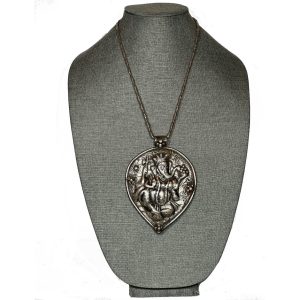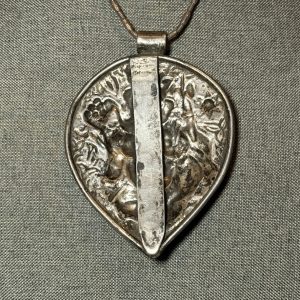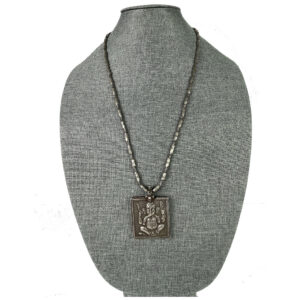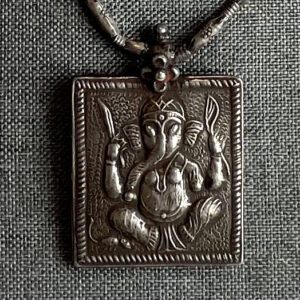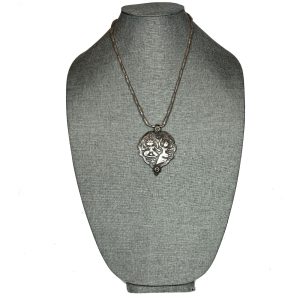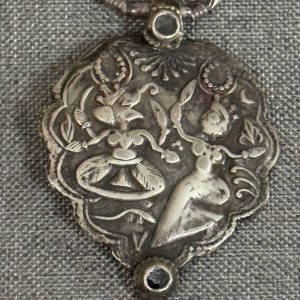Antique Silver Ganesh Pendant 4 Arms and Sweets (22043)
Original price was: $440.00.$375.00Current price is: $375.00.Ht: 5.125″ W: 3.75″ D: 0.625″ | FREE SHIPPING within continental U.S.
Large and heavy silver pendant with 4 armed Ganesh in betel shape frame reaching for his favorite treat modak sweet dumplings with coconut. As the remover of obstacles Ganesh pendants worn for good luck . The coin silver chain is included.

